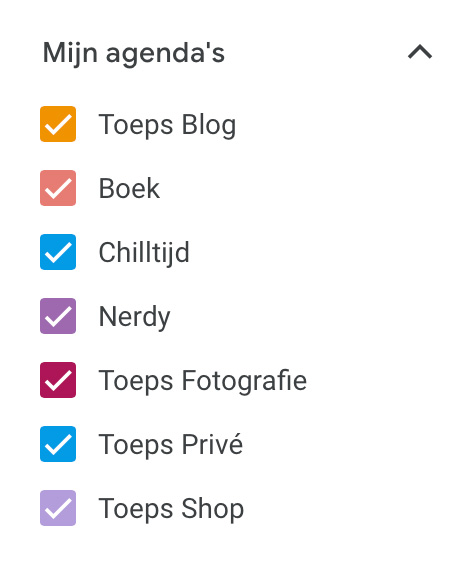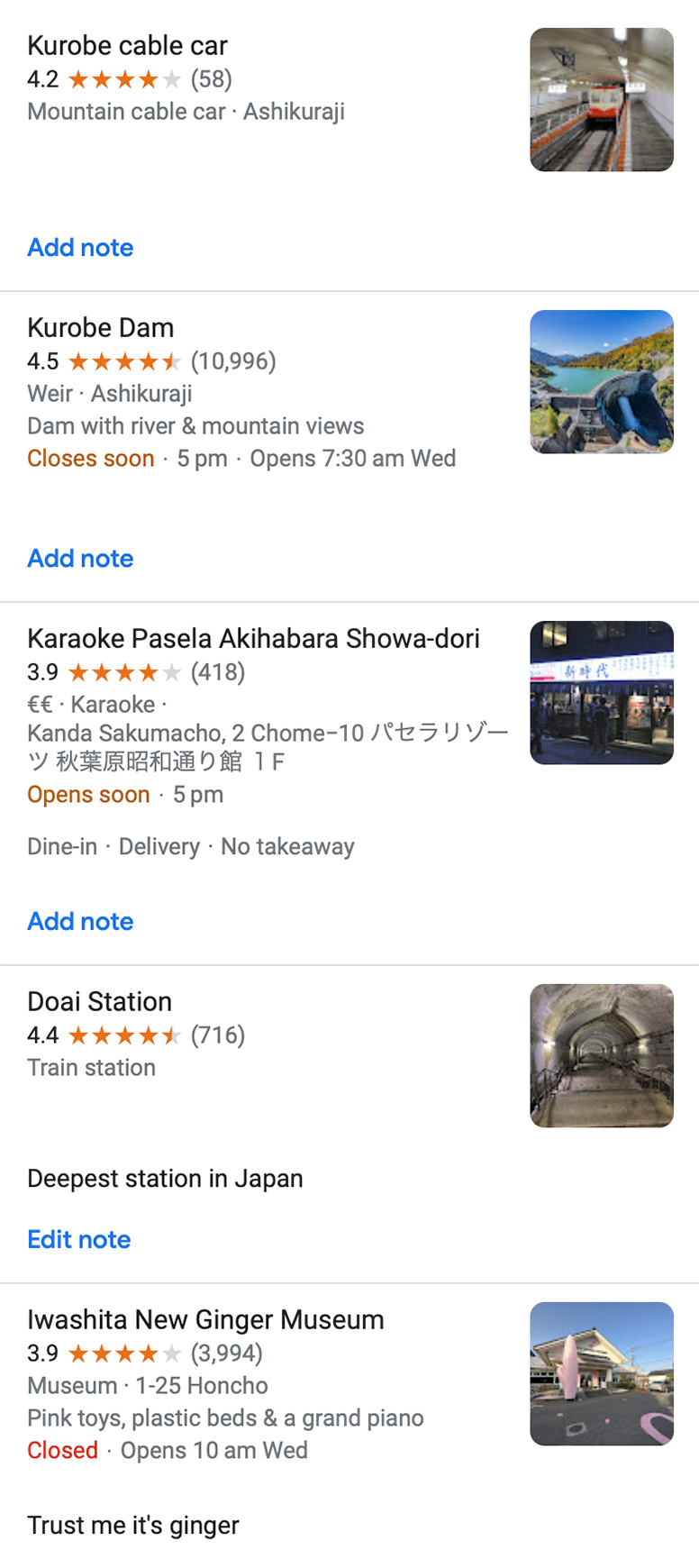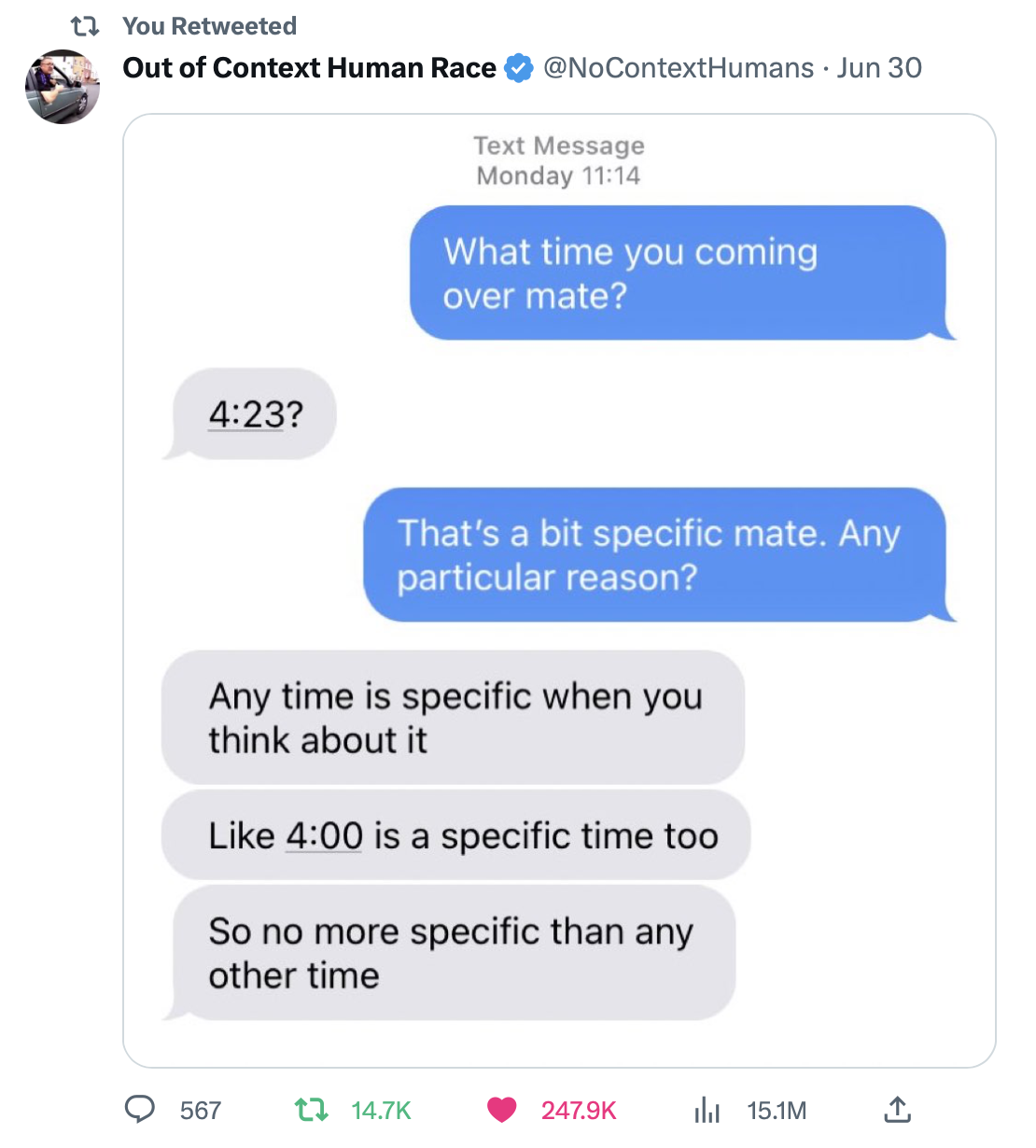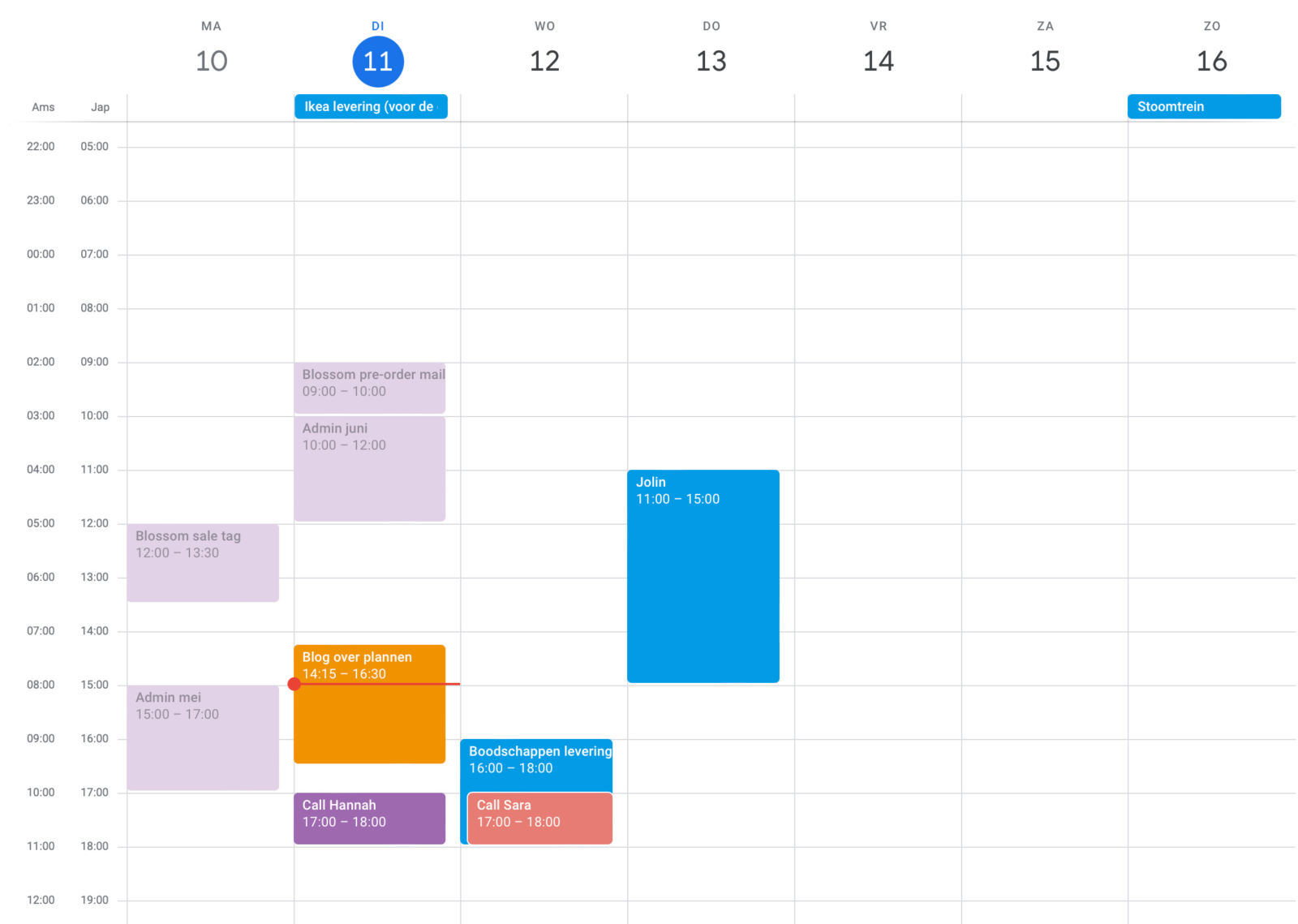As an autistic person, I sometimes find it difficult to manage stimuli. It is often too much, and if I go beyond my limits I sometimes have to recover for days. In my book I wrote about how I learned to create structure by planning. Now you may be thinking: Sure, planning is good, but how exactly do you do that? While I don’t think there is one method, and I believe everyone has to figure out what works for themselves, I have listed eight points below that have perfected my planning over the past ten years. I hope you find them helpful.
1. Use a tool such as Google Calendar or iCal
I know some people will immediately get triggered by this tip, because paper calendars are the bomb and where else are you going to put all that masking tape and stickers? Also, some people need to see a calendar in front of them, but did you know that Google Calendar has a handy print function?
Alright, enough about the cons, let’s talk about the benefits. No more scraping and erasing, because a digital calendar lets you move, delete and edit appointments. You can send yourself reminder emails, automatically add bookings and meetings to your calendar, and even share your entire calendar (or parts of it) with someone else. More on this later.

2. Use different colors for different tasks
As you can see in the screenshot above, I use different colors for different tasks. For example, freetime has the color blue, and photography has the color red. My blog is orange and website jobs have a purple hue. I tried to choose the colors in a way that visually communicates the amount of energy required. Photography is the most demanding, so those entries get the color red. Logical? I think so.
People with autism, including myself, often have trouble switching from one task to another. So as soon as my calendar starts looking like a mosaic-tiled bathroom from the early ’00s, I know something is not going right.

3. Schedule travel time and off time
Traveling takes time, as well as energy. That’s why I also schedule travel time. That way I can immediately see if I have to travel during rush hour, and, if possible, I can take steps to avoid that. When I still lived in the Netherlands, I had an off-peak train pass for first class. That only cost an extra 30,- per month and saved me a lot of sensory overload. By taking travel time into account during scheduling, I was able to steer the other party to a time that was ideal for me. If a client suggested 9:00, I would ask if 10:00 was okay too. Usually you don’t need to explain this at all by the way, especially if you are still at the stage where both parties are just blurting out random suggestions.
You don’t see it in the schedule above, but I also regularly schedule rest periods. To do that, I block out a day with a blue square called “chill time”, or, as used to happen a little more often in the past, with the description “completely dead, RIP Toepsie.”
4. Ask: " Is this really necessary?"
The risk of to-do lists or schedules is, at least in my case, that I like to fill them up completely. And a downside of my autistic brain is that things that are on the list or schedule then actually have to be done, even if, in retrospect, they weren’t really necessary at all.
For example, here in Japan I have two large Ikea bags of clothes that I want to exchange at the second-hand clothing store. Unlike in Holland, you get money for that in Japan, at least, if they find the clothes to be trendy. Although the bags annoy me, the clothing doesn’t really get in the way. Still, my brain wants to turn them in as soon as possible: then that job is done. At the same time, I’m pretty busy right now, with some websites and my new book. Besides, it’s 36 degrees outside, not really the kind of weather to start lugging around a big Ikea bag. If I do, I probably won’t be able to do much else that day. And if I get a muscle ache or headache from that heavy bag, neither will I be able to the next day. So I talk to myself sternly. “Does this really have to be done? And does it have to be done now?” The answer is no. So instead of going on my to-do list, getting rid of/exchanging clothes goes on my options list.
5. Have options
When I first learned to plan, I didn’t understand the concept of “resting.” I would often sit at home bored to death, because I was tired, I needed to rest, but at the same time I had nothing at all to do and that was totally boring. Until a friend, mother of a baby son, told me about options. She explained to me that life with children is unpredictable, because you never know ahead of time when your child will have a crying day, or, on the contrary, loads of energy. Therefore, she had a list of options on her phone, of which she picked the most appropriate one on the day.
I adopted her idea and it did wonders for my rest days. I finally understood that resting didn’t mean staring at the wall all day, but that I could check how I was feeling and then choose an activity to do in accordance with that. If I was exhausted, I would watch a documentary. Was I feeling like going out? Then I would go to the thrift store. Did I unexpectedly have energy for ten? Then I could KonMari my closet, paint a door, or go for a run. These days, I have multiple option lists. There are options in Google Tasks, for example, but I also have a list in Google Maps where I save interesting places and stores to visit later.


6. Don't plan more precisely than necessary
The autistic, Japanese Naoki Higashida writes in his book The Reason I Jump why he doesn’t like those visual daily schedules with icons and all, which are often seen as the holy grail for autistic people. He finds that too specific: Once something is scheduled at 9:00, it has to be at 9:00. His head has so much trouble shifting gears and making changes that such a schedule causes him much more stress than if someone had verbally gone over the day with him.
When I was just getting help for my autism, we looked at my morning schedule. The therapist worriedly wondered if I brushed my teeth in the morning, because it didn’t say that anywhere. Now let me ease your concerns: Yes, of course I brush my teeth. But that is such a logical action for me that I am not going to put it in a schedule. Like Naoki, I would get all stressed out by that.

7. Update the schedule afterwards
Did you have something scheduled, but it all turned out differently? Then retroactively adjust your planning. This is especially helpful for autistic people who struggle with burnout symptoms, or for whom overstimulation seems to go from 0 to 100 in an instant.
I, too, used to have very little insight. I thought I got headaches at random moments, and was always afraid this pain would ruin a job or getaway. Only after months of tracking did I begin to see, and I mean literally see in front of me in a colorful block diary, that the headaches almost always came after a day of shooting. (Although, sometimes I would have three days of shoots, and then it would come after that.) Once I figured out what was causing my headaches, I decided to plan differently. I blocked out the days after shoots, and told clients I wasn’t available that day. Again, an elaborate explanation is often not even necessary. The client doesn’t know whether I have another job, or an appointment with my bed to lie in it all day.
8. Evaluate together
Initially, I evaluated my schedule with my therapist, but when I no longer needed her, Riemer took over. We made a habit of looking at my schedule every Sunday, both looking back and forward. That way we identified bottlenecks, which I then usually resolved immediately by sending people emails along the lines of: “Hey, I’m pretty busy on Thursday, would you mind meeting at my place?”. I would also block out days in weeks that were starting to get pretty full, to prevent myself from accepting too many bookings or invitations. By the way, it is always a good idea to not immediately say yes to anything. Ask them to put it in an email and come back to it later, possibly after looking at the schedule with someone.
I share my Google calendar with Riemer, and sometimes he will subtly ask if what I have put in there is really necessary, and if it needs to be done now. It never really does.

Above you can see my current planning. As you can see, it looks a lot calmer than the one from years ago. That’s not because I am doing less per se, but mainly because I am planning less. It’s not that I’m just picking my nose at those blank spaces – for example, yesterday evening I was in bed mailing with Blossom Books about a bug on the website. But as I said above, I don’t plan more than necessary. And since I have everything nicely under control at this point, this is currently what that looks like.
Meanwhile, I’m working on my schedule for September, when I’ll be back in the Netherlands for a few weeks. In those weeks my new book will be launched, I’ll be narrating the accompanying audiobook, I’ll have to do promotion… In that hustle and bustle, planning comes in handy. While planning, I noticed that I have to be in the recording studio in Weesp for three days in one week. I know how intense those recordings are, so I decided to book a hotel nearby. Because I know myself quite well by now, I’m gonna be thoroughly prepared – which will help me function so much better.
Whoa, so oldschool! An RSS feed!
Save this link in your RSS reader and follow my blog however you want it – chronological, in your mailbox, in your browser... Yes, the past is here!
https://www.toeps.nl/blog-en/feed/



